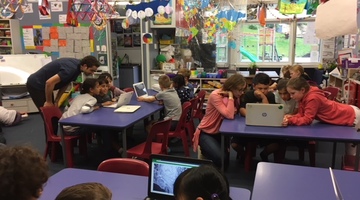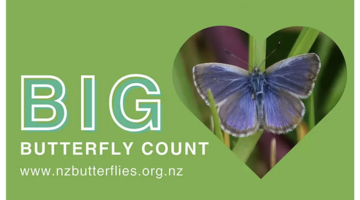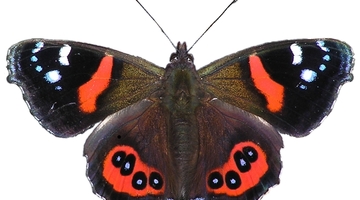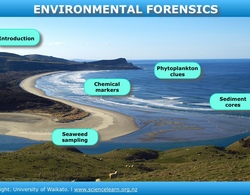

Names are important. They identify who we are and where we come from. But sometimes, names don’t tell the whole story. For example, the Oxford Dictionary defines ‘moth’ as an insect with two ...
READ MORE

Moths are members of the order Lepidoptera, but these mostly nocturnal creatures are often in the shadow of the brighter, day-flying butterflies. New Zealand has fewer than 20 butterfly species ...
READ MORE

Project Hotspot was a Taranaki-based citizen science project and one of the Participatory Science Platform (PSP) projects supported by the New Zealand Government. The Ngā Motu Marine Reserve ...
READ MORE

In this activity, students place small stickers (tags) onto caught or newly emerged monarch butterflies and release them into the environment. The tag number, information about the butterfly and ...
READ MORE

In this activity, students set up and walk a transect to observe and record butterfly sightings. They act as citizen scientists to monitor changes in the local environment. Modify this activity ...
READ MORE

This unit plan shows how teacher Carol Brieseman used the online citizen science (OCS) project Identify New Zealand Animals to offer her students another way of developing their understanding ...
READ MORE

This New Zealand-based citizen science project collects data about butterflies in our gardens, schools, parks and farms – any location in the country or on the outer islands. This annual event – ...
READ MORE

iNaturalist logs hundreds of thousands of photos of flora, fauna and fungi. There are even sound recordings too. Each is described and geo located. iNaturalist is used by citizens and scientists ...
READ MORE

This project involves the pesky Pieris rapae (better known as the white butterfly or white cabbage butterfly), which is very common in Aotearoa New Zealand. It is believed to have originated in ...
READ MORE

The New Zealand Curriculum has a strong focus on ensuring that all students have the skills and knowledge to participate in public debates and decision-making processes as critical, active ...
READ MORE

In this online PD session recorded on 30 July 2015, primary school teacher Angela Schipper describes how she used the Butterflies resources from the Science Learning Hub in the classroom. In ...
READ MORE

This unit plan is designed for students in years 1–5. When someone mentions the word ‘butterfly’, what image pops into your head? Chances are it’s the monarch or the white butterfly, as these are ...
READ MORE
In this online PD session recorded on 30 July 2015, primary school teacher Angela Schipper describes how she used Butterflies content from the Science Learning Hub in the classroom. In ...
READ MORE
Dr Robert Hoare, of Manaaki Whenua – Landcare Research, tells the story of Fred the Thread, the world’s thinnest caterpillar. Join the detective hunt for this elusive species.
READ MORE
E whakamārama ana a Georgia, tētahi o kā ākoka ki Te Kura Kaupapa Māori o Ōtepoti, me pēhea te whakarite i te tārore pepe tuna Heath, ki te whakamanea, ki te hopu i kā pepe tuna. English ...
READ MORE

Exploring moths as ecological indicators of health and connectedness in our natural world. Select here for further information, transcript and copyright.
READ MORE

Dr Candida Savage explains the clues she collects in estuaries and fiords, to understand how changes in land use affect these environments. Click on the labels to watch the videos for more ...
READ MORE

Most of New Zealand's butterflies belong to the Nymphalidae and Lycaenidae families. Use the Slideshow menu for further options, including view full screen, and go here for the download option.
READ MORE